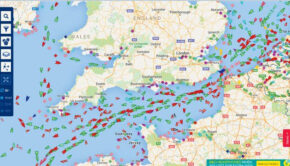What Goes Wrong and How to Prevent It
Published on October 22nd, 2017
by Mario Vittone, Soundings
I knew a North Carolina Highway Patrol officer who once told me, “I’ve never unbuckled a dead man.” His point was that wearing a seat belt makes all the difference in highway safety. Then he asked, “Kind of like life jackets, right?” I didn’t hold back the bad news. “Oh no, sir,” people drown wearing life jackets all the time, every year.”
Most drownings with life jackets relate to cold water, but also boaters frequently don’t survive accidents because a piece of safety gear they relied on failed, or because they didn’t use it correctly. A life jacket is not a seat belt.
If you want to decrease your chances of living through a boating accident, buy the best possible survival gear you can, stow it on your vessel, and then leave it there. I guarantee your experience actually using it will not be what you expect. With the exception of closed-cell-foam-type life preservers and ring buoys, modern safety and survival gear is often complex and sometimes complicated equipment that requires you to do things after you purchase it.
When I was a survival petty officer in the Coast Guard, I weighed thousands of CO2 cylinders used in life jackets and other safety gear. It’s how we determined if they had leaked or not. None of them ever did. Pressurized CO2 cylinders are extremely reliable. If they are corrosion-free and the seal is in place, there is a very high probability that they will work when needed. But that’s where the guaranteed reliability of inflatable life jackets ends.
I don’t remember the number of inflatable life jackets I’ve inspected that did nothing when I pulled the inflation lanyard or failed to auto-inflate as advertised, but for sure it’s more than 20. I’ve had lanyards break off in my hand, seen pins corroded in place and witnessed plenty of hydrostatic releases fail.
All manufacturers of life jackets (inflatable and non-inflatable), immersion suits and life rafts have minimum recommended inspection and maintenance procedures. If you haven’t already, you need to read those recommendations, make an inspection schedule for all your gear and get to it. Most often, impending failures easily are seen with the eye, but you have to look to find them. For inflatables, that means opening and unfolding the bladders and getting your eyes on every square inch of the “save your life” part of the thing.
Full story… click here.









 We’ll keep your information safe.
We’ll keep your information safe.